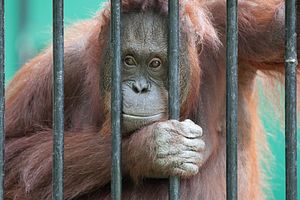Transnational organized crime is a fluid network of illicit flows that continues to exploit the Pacific and its vulnerable location. With sharply rising in demand for endangered species, criminal networks are rushing to take advantage of porous maritime locations. Despite increased attention by the international community in more recent years, with bodies such as the United Nations Office on Drugs and Crime trying to heighten awareness and educate civil society to mitigate the networks’ effects and ability to recruit, wildlife trafficking remains a global phenomenon that exploits the poorly managed wealth often evident in the Asia-Pacific.
Connected by an ocean stretching from Australia, to Asia and the Americas, the Asia-Pacific region offers endless opportunities for organized transnational criminal networks. Maritime networks capitalize on environmentally fragile areas that are often tainted by corruption, poor governance, and lax law-enforcement regulations. This has created an urgent need for international support to prevent the further exploitation of corrupt officials, environmental vulnerabilities, and gaps in law enforcement.
The rising demand for illicit wildlife products is alarming, creating a proliferation of endangered species in the Pacific and a growing risk of extinctions. The process by which that demand is met entails a series of criminal activities: poaching, illegal transportation, smuggling, fraudulent documentation, sales, money laundering. These activities have quickly taken wildlife trafficking up the ranks of black market industries – according to the United Nations Office on Drugs and Crime it is now worth an estimated $2.5 billion.
Transnational organized crime, particularly maritime organized crime within the Pacific region, thrives on socioeconomic impoverishment and legal vulnerabilities, which create the conditions to exploit corruption and enhance illicit profits. The South Pacific in particular is home to a vast array of endangered corals, marine turtles, birds and reptiles that continue to be sourced, smuggled, and later sold to consumers in Asia, Europe, and the United States. (China is the largest market.) Demand for rare or endangered species offers a profit that can be too tempting to resist. Basic supply and demand theory dictates where the incentives lie.
A report by the World Bank meanwhile highlights the complexity surrounding the increased use of technology, particularly the internet and e-banking, which gives both smugglers and dealers unprecedented access to new markets, while providing buyers with virtual anonymity. This coupled with what are often lax domestic and international repercussions, gives criminal networks virtually free reign to exploit systemic deficiencies.
Even the region’s most developed countries face threats. With 96 critically endangered wildlife species, Australia needs to strengthen not only conservation efforts, but also the legal structures and penalties that can serve as deterrents. Fail to do so, and the local environment will continue to pay a heavy price.
The significance of the broader Pacific region, aside from its native species, is in the transportation options available to smugglers (such as air and sea). Criminal networks monitor law-enforcement agencies, and then switch means and routes to avoid detection. The strategies appear endless, and overwhelm environmental and organized crime initiatives. In response, authorities are shifting focus to attempts to address structural deficiencies and enhance the capacity and transparency of regional governments.
Yet just as globalization has given criminal networks more tools, it also allows for cooperation among the agencies that track them. This cooperation can begin to tackle the “push and pull” factors that drive wildlife trafficking, such as economic mismanagement, corrupt officials, socio-economic impoverishment, inequality, and increasing demand. Although their focus is more on the rising challenges of migrant smuggling and human trafficking, international bodies such as the United Nations Office on Drugs and Crime have begun to take on the broader issue of maritime organized crime and its vast repercussions, particularly for the Asia-Pacific.
Eliminating wildlife trafficking is for now unrealistic, but progress could be made by bolstering legal capacities. The transnational nature of the networks involved in trafficking demand international efforts to combat them. Unfortunately, these efforts are often stymied by national interest. They must also contend with the reality of uneven development, particularly in the South Pacific, coupled with corruption, nepotism and socio-economic impoverishment.
Still, a number of steps could be taken, with a focus on three areas in particular. First, international cooperation remains vital to creating opportunities for information sharing and training opportunities for the adoption of “best practices.”
Second, creating frameworks for legal assistance agreements and extradition arrangements will bridge the gap between states, different judicial systems, and current deficiencies, while making transnational investigations, seizures and prosecutions more efficient. Associated with this is the need to harmonize laws.
Third, transnational organized crime can no longer be regarded as an issue relevant only to the most vulnerable regions. If wildlife trafficking is to be countered, it needs to be addressed in conjunction with all of the enabling factors that allow it to thrive. This will entail resources, regulations, and civic engagement.
Only by taking stock of the harsh reality of what has happened and rebuilding can we hope to stem the environmental depredations of the illicit trade in wildlife.
Bianca De Bortoli is currently an Intern at the United Nations Office on Drugs and Crime in Tehran.

































